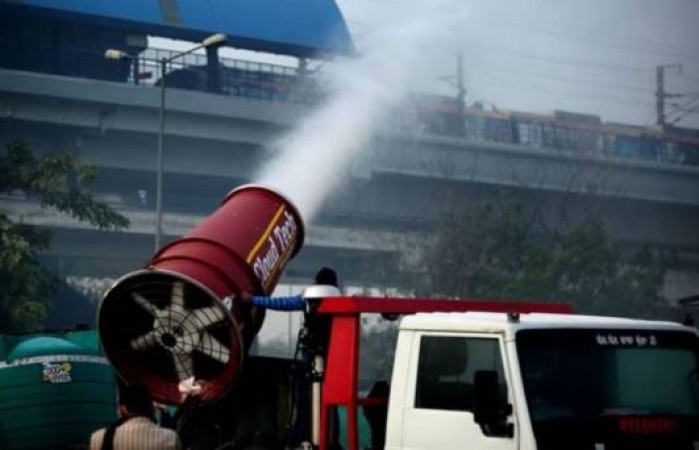
Pollution is a global challenge that threatens the well-being of our planet and its inhabitants. To tackle this issue head-on, we must equip ourselves with a range of effective weapons. Without these weapons, it becomes increasingly difficult to win the fight against pollution.
Before delving into the essential weapons, it's crucial to understand the urgency of the situation. Pollution, in its various forms, harms the environment, human health, and the economy. It contributes to climate change, biodiversity loss, and a host of health problems. This urgent need for action cannot be understated.
Education: Raising awareness and educating the public about the sources and consequences of pollution is paramount. Knowledge is a potent against ignorance and apathy.
Public Engagement: Engaging communities, schools, and organizations in clean-up efforts and environmental projects helps instill a sense of responsibility.
Transition to Clean Energy: Fossil fuels are a major source of pollution. Transitioning to renewable and sustainable energy sources such as wind, solar, and hydropower can significantly reduce pollution. Energy Efficiency: Improving energy efficiency in industries and households can lower pollution levels while also saving resources.
Stringent Laws: Implementing and enforcing strict environmental regulations can curb pollution from industries and other sectors. Penalties and Fines: Imposing substantial penalties and fines for non-compliance acts as a deterrent against environmentally harmful practices.
Advanced Air Filters: The development and use of advanced air filtration technologies can reduce air pollution in urban areas. Waste-to-Energy: Innovative methods of converting waste into energy can help reduce land and water pollution.
Electric Vehicles: Promoting the adoption of electric vehicles can cut down on pollution from traditional gasoline and diesel cars. Public Transportation: Expanding and improving public transportation systems can reduce the number of individual cars on the road.
Organic Farming: Encouraging organic farming practices can reduce the use of chemical fertilizers and pesticides, which contribute to water and soil pollution. Crop Rotation: Implementing crop rotation techniques can maintain soil health and minimize pollution from farming.
Conservation Efforts: Protecting natural habitats and wildlife is essential in combating pollution and preserving biodiversity. Reforestation: Planting trees and restoring forests helps absorb carbon dioxide, reducing air pollution.
Recycling Programs: Efficient recycling programs can reduce the amount of waste ending up in landfills or incinerators. Proper Disposal: Ensuring that hazardous waste is disposed of safely is crucial to prevent soil and water contamination.
Global Agreements: Collaboration among nations is vital to address cross-border pollution issues, such as transboundary air pollution and marine litter. Sharing Best Practices: Sharing successful pollution control strategies globally can lead to more effective solutions.
Eco-friendly Products: Consumers can opt for eco-friendly products and reduce their carbon footprint by making sustainable choices. Supporting Green Companies: Supporting companies with strong environmental commitments can encourage responsible production.
Sustainable Building Design: Green buildings with energy-efficient features reduce energy consumption and pollution. Urban Planning: Well-planned cities with green spaces and efficient public transportation can mitigate pollution.
Technological Advancements: Investing in research and innovation can lead to breakthroughs in pollution control technologies. Data Analysis: Data-driven insights can help identify pollution sources and develop targeted solutions.
Tax Breaks: Providing tax incentives to companies that reduce pollution can encourage sustainable practices. Subsidies for Clean Tech: Government subsidies for clean technology initiatives promote environmentally friendly solutions.
Environmental Movements: Grassroots movements and advocacy groups play a pivotal role in holding governments and corporations accountable. Public Pressure: Raising public awareness through protests and campaigns can drive change.
Reduce, Reuse, Recycle: Embracing the mantra of reducing, reusing, and recycling minimizes waste and pollution. Circular Economy: Promoting a circular economy where products are designed for reuse and recycling is essential.
Environmental Agencies: Empowering environmental agencies to monitor pollution levels and hold polluters accountable is crucial. Transparency: Transparent reporting of pollution data allows the public to make informed choices.
CSR Initiatives: Encouraging corporate social responsibility (CSR) encourages businesses to minimize their environmental footprint. Green Supply Chains: Implementing sustainable supply chain practices reduces pollution throughout the production process.
Local Initiatives: Engaging local communities in pollution control efforts fosters a sense of ownership. Cleanup Campaigns: Community-led cleanup campaigns can improve local environments.
Resilience Strategies: Preparing for the impacts of climate change, such as extreme weather events, can mitigate pollution-related damage. Infrastructure Improvements: Strengthening infrastructure to withstand climate-related challenges reduces pollution risks.
Sustainability Goals: Setting and pursuing long-term sustainability goals ensures a continuous commitment to pollution reduction. Generational Responsibility: Passing down a cleaner planet to future generations is a profound motivation. In the battle against pollution, we must wield these weapons collectively, and consistently. Pollution knows no borders, and our efforts to combat it must be relentless. By focusing on these weapons and working together, we can make a substantial difference in preserving our environment and securing a healthier future for all.
PM Modi Announces 5-Year Extension of Ration Scheme for 80 Crore People
City of Nawabs becomes street food hub, enjoy famous dishes at these places of Lucknow